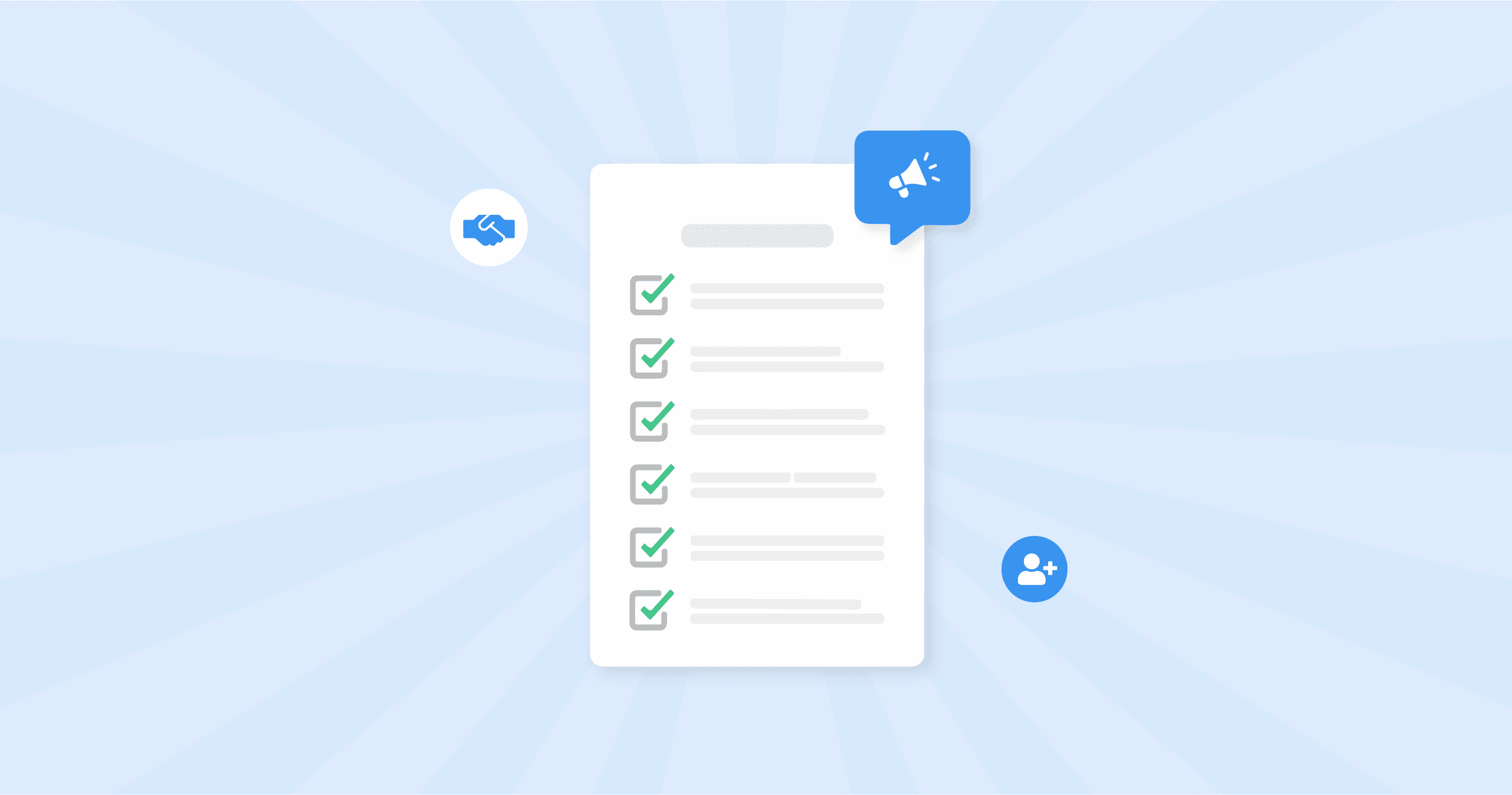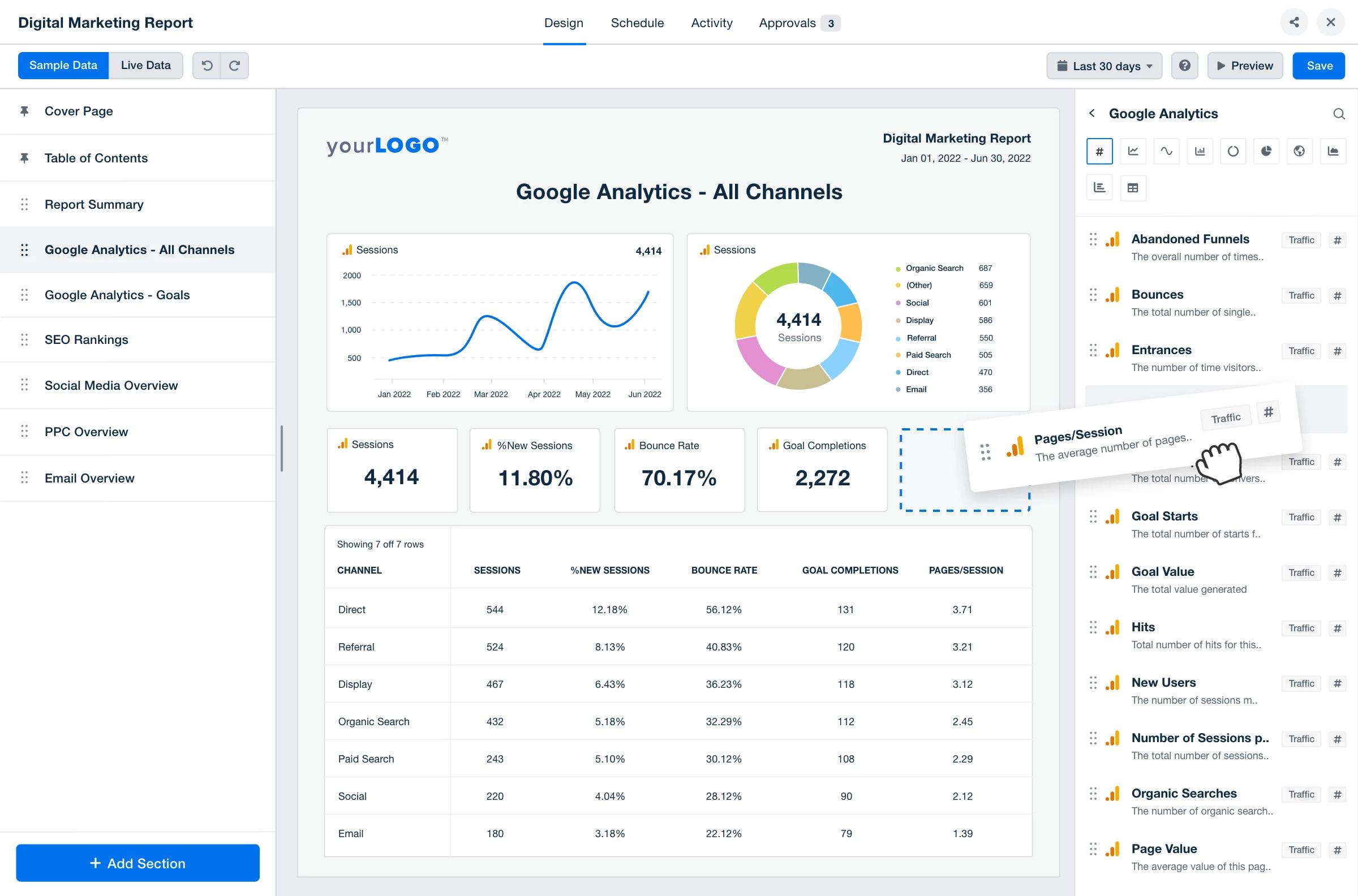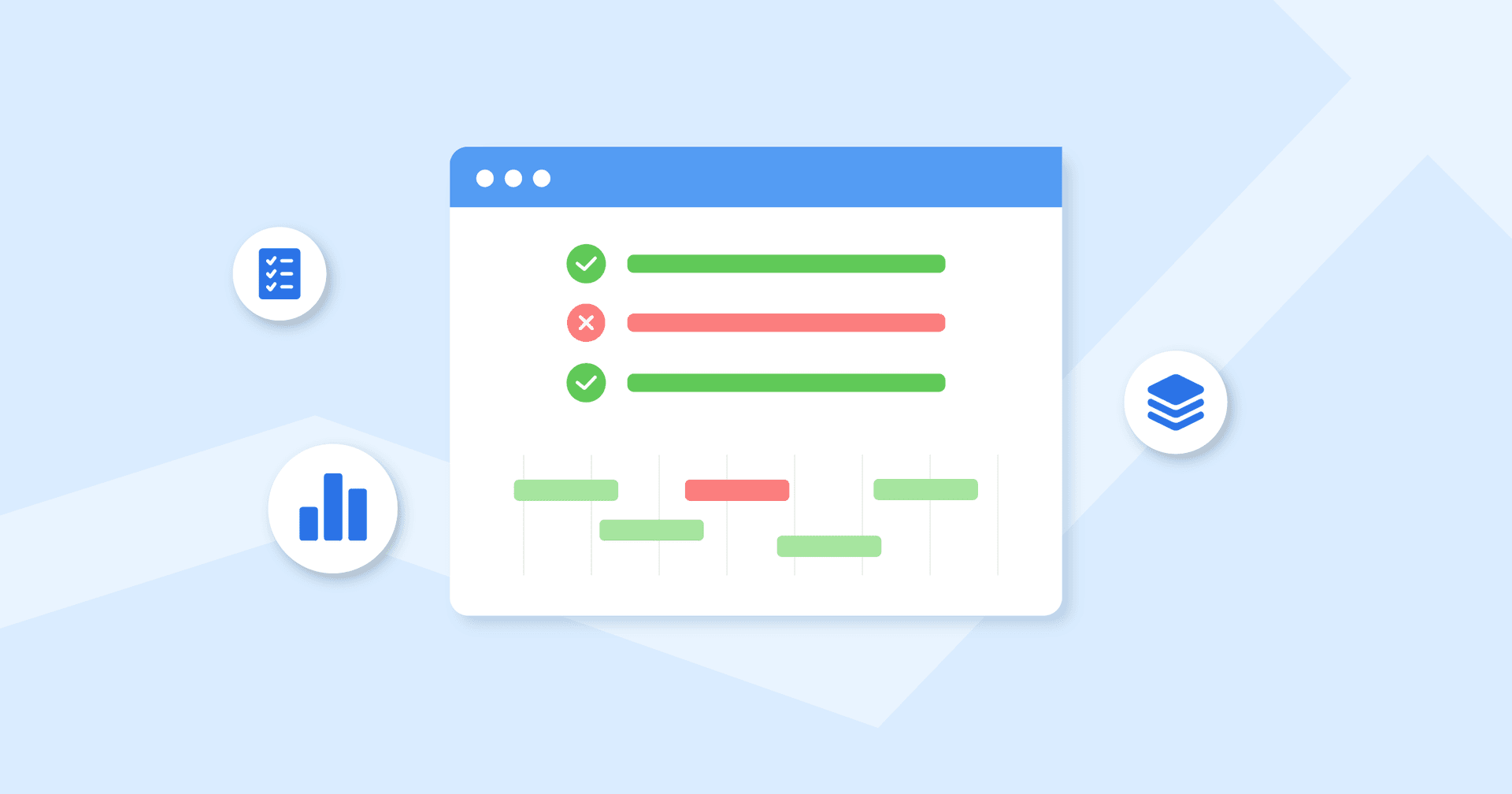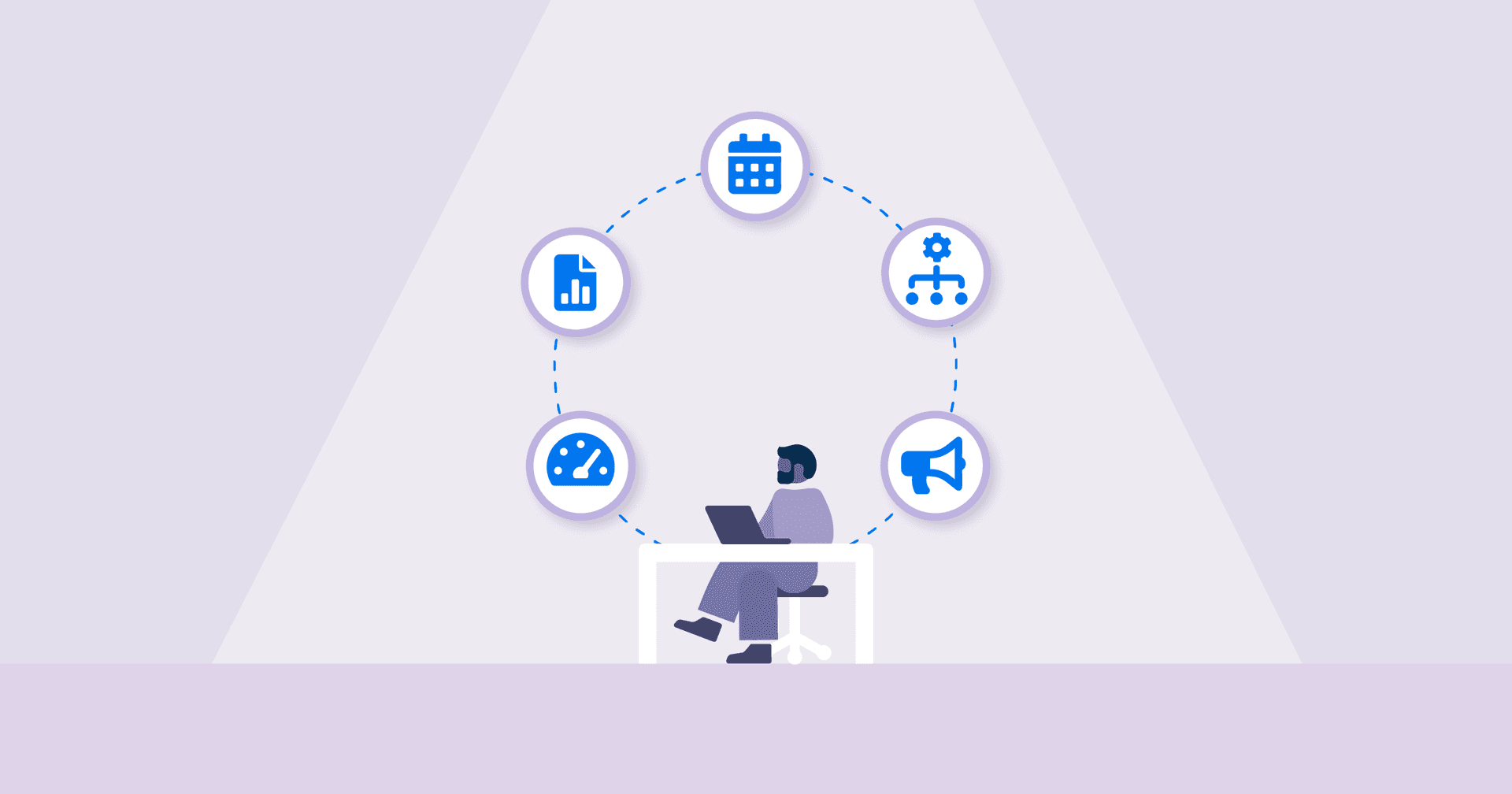
QUICK SUMMARY:
Client onboarding is an important process that ensures a smooth transition and strong working relationship with a new client. A well-structured client onboarding checklist helps agencies gather necessary information, understand client expectations, and reduce miscommunication risks. This six-step guide provides a comprehensive framework for effective client onboarding, tailored to meet diverse agency needs and enhance client relationships.
You’ve just welcomed a new client to your marketing agency. *high fives all around* 🙌
But before you start pouring the champagne, hold on... Are you constantly scrambling during onboarding, leaving clients feeling confused and your team stressed? It's time to onboard your new client with a clear plan to ensure success and build a strong, lasting relationship.
Managing client expectations is essential to client retention, and it begins on day one. Without the right processes, you'll inadvertently throw a wrench in your agency’s growth goals.
If you don’t already have a client onboarding checklist template–or want to ensure you’re making the most of this critical phase of the agency-client relationship, you’ve come to the right place.
This article will equip you with a seven-step onboarding client checklist that will help you onboard new clients smoothly and reduce churn.
Let's get started...
What is a Client Onboarding Checklist?
A client onboarding checklist (also known as a customer onboarding checklist) is a roadmap agencies use to seamlessly welcome and integrate new clients. It outlines the key steps involved in establishing clear goals, expectations, and processes for a successful partnership from the very start.
Think of a client onboarding checklist as your agency's secret weapon. It helps you:
Streamline the Process: Create a consistent, efficient onboarding experience for every client.
Prevent Miscommunication: Eliminate misunderstandings by gathering critical client information and setting clear goals.
Build Trust and Professionalism: Demonstrate attention to detail and commitment to the client's success.
Reduce Churn: A smooth initial experience sets the stage for higher client satisfaction and a longer partnership.
Protect Your Resources: Avoiding mistakes and miscommunications saves time, money, and your team's sanity!
Enable Scalability: A standardized onboarding process lets you easily bring in new clients without sacrificing quality.

When we're onboarding new clients, there's a huge checklist of tasks to go through: getting access to or creating ad accounts, websites, Google Analytics properties, Google Search Console, and more, formulating a strategy, setting up conversion and event tracking, etc. You know the drill. It's a tedious and lengthy process.
Graham Lumley, Director of Growth Marketing, Blackhawk Digital Marketing
In essence, a client onboarding checklist isn't just about checking boxes. It's your agency's blueprint for building a strong foundation for lasting client relationships.
The Benefits of a Client Onboarding Checklist
Client onboarding is the crucial process of welcoming a new client into your agency's workflow. A well-defined onboarding strategy ensures a smooth start and lays the foundation for long-term success. But why exactly does your agency need a client onboarding checklist?
One of the biggest challenges we faced was ensuring that every employee was aligned with our mission and values, while also having the resources they needed to perform their jobs effectively. To address this, we created checklists and written procedures for every position and every repeatable task, such as onboarding and offboarding.
Adam Binder, Founder + CEO, Creative Click Media
Here's what a robust client onboarding checklist can do for you:
Sets Clear Expectations: Outlines project scope and goals, preventing misunderstandings and ensuring client satisfaction.
Minimizes Mistakes: Reduces the risk of oversights and costly errors, protecting your agency's time and resources.
Demonstrates Professionalism: Signals to clients that you're organized, detail-oriented, and invested in their success.
Enables Scalability: Streamlines the process allowing your growing team to easily onboard new clients.
Mitigating Scope Creep: Clearly outline expectations upfront to prevent project overreach and client dissatisfaction.
Streamlining Communication: Centralize client info and internal notes to keep your team – and your client – informed and aligned throughout the onboarding.
Boosting Client Confidence: Demonstrate your professionalism and instill trust which are crucial for building strong, lasting client relationships.
Apart from this, having a clear client onboarding workflow in place allows anyone on your growing team to be on the same page when building client relationships.
After all, consistency is essential for scalability.
How To Implement a Client Onboarding Process
This seven-step new client onboarding checklist will cover key touchpoints to help streamline your client onboarding experience and reduce churn. It covers:
While no two agencies are the same, this client onboarding template will help you establish a strong working relationship from day one, leaving you room to personalize it and make it your client onboarding SOP.
1. Secure a Signed Contract & Set Payment Methods
While a clear “yes” or handshake feels great, it’s not official until you’ve done your due diligence and put it into writing.
And clear agreements lead to long-lasting relationships.
That’s why the first client onboarding step is to provide your new client with a contract should always be the first step in the onboarding process.
There’s more than one way to share a contract–and it doesn’t have to be done in person to make it official. Send and sign contracts via email or even online platforms such as DocuSign or HelloSign.
If they’re excited to work with your agency, it won’t take long for them to review the contract, ask questions, and return the signed copy.
At that point, there’s only one thing left to do: wait for the client to remit the payment. Be clear about which financial services you'd like to use to receive payment, be it via bank transfer, check, credit card, or wiring it online through PayPal.
Agency Tip: While it’s optional to request a payment up-front, requesting a deposit at the beginning of your contract is good practice. Neglecting to do so puts you at risk of non-payment, which is never a fun interaction.
Remember, a contract is about setting up clear expectations and building solid relationships that keep both parties happy.
2. Internal Kickoff Meeting
Now that you’re past the first two major hurdles, it’s time to assign a team and prepare for the project.
This is where you will:
Explore the scope of the project.
Assign roles and responsibilities.
Ask and answer key questions.
Share the clients’ key information such as website URL, social handles, key contacts at their company, access to relevant logins, and marketing collateral.
Determine the next steps.
Similar to the onboarding checklist, your internal kickoff meeting should remain consistent from client to client. Next, your team should discuss how they will assess their progress and reach their goals.
But before determining your KPIs and metrics and how to reach them, you’ll need more information.
3. Send Your Onboarding Questionnaire
Send a detailed yet concise welcome email that provides the client with the information necessary for your agency to move forward with the project.
That’s where the client onboarding questionnaire comes in. It is designed to gain a better understanding of the client’s requirements and meet their expectations.
Here are a few tips to make the most of your onboarding process questionnaire:
Don’t include too many questions–15 to 20 should suffice.
Consider the best way you will distribute the questionnaire–be it Google Sheets or a software application.
Propose a deadline–i.e. “We’d love to receive the questionnaire back within 10 business days.”
Offer your help with any questions or concerns and provide the right contact information for this.
A well-thought-out questionnaire will result in useful information both for the onboarding process and for future use.
Download Your Client Onboarding Questionnaire Template
Streamline your workflows and grow your agency.
4. Technical Setup & Project Kick Off
A smooth technical setup paves the way for success. Think of it like laying the foundation for your marketing campaign. Before your team dives into strategies and creative, make sure they have the tools and access needed for a seamless workflow.
Here's how to nail the technical onboarding stage:
Gather Logins & Access: Kick things off by getting a comprehensive list of all websites, software, and platforms your team will need to work with. Reach out to your client to set up new user accounts if necessary or request the proper access levels for your team members.
Connect Systems: Many marketing services involve integrating various tools and platforms. Work with your client to connect their existing setup with your agency's reporting software, analytics dashboards, or any other relevant systems. This streamlines information flow and gets everyone working in sync.
Walkthrough of Existing Setup: Get a bird's-eye view of their current tech stack. Ask your client for a brief walkthrough of their website setup, the analytics they currently track, and other tools they use. This preps you to align your strategies and avoid hiccups when digging into their marketing data.
Project Management Setup: With the technical details sorted, it's time to organize your workflow. Add the new client project to your preferred project management software. This is where you'll invite team members, centralize all relevant information (like contacts and the scope of work), and set those all-important milestones to keep your team on track.
These initial steps might not feel flashy, but they're like greasing the wheels before a big race. A well-executed technical setup means your team hits the ground running without frustrating delays.
Pro Tip: Maintaining open communication with your client and your own team throughout this setup phase is key. Technical processes can sometimes have hiccups, so staying in the loop prevents bottlenecks and establishes trust early on.
5. Set Up Your Client Reporting
Once you know what campaigns you'll be running, it’s best to get cracking and start tracking! Not only will this help you benchmark against your goals, but it will also help you benchmark against your progress. And that looks good.
When we're onboarding a client, we ask what their KPI's are, then we ask them to help us connect their accounts to our system. We show them what we're going to track, how we're going to track it, and what they can expect.
Ruben Roel, President, Investigator Marketing
Client reporting is traditionally a pain. But it’s a joy and a wealth of knowledge once you’ve automated it. And it saves you dozens–even hundreds–of hours each month depending on your client count.
Our clients love their customized reports on data based on what they are most interested in understanding for their specific business. We start with a template for our new clients, and during their onboarding, we ask what their top KPIs are. We make sure to include those on the first page for them. As we have our first few strategy meetings, we take a look at these reports and ask our clients about their reports, and make edits to the templates with our clients as another customization tool.
Christina Cypher, Director of Marketing, Click Control Marketing
That’s why your marketing agency needs to follow reporting best practices–a comprehensive and automated reporting system to keep your clients in the loop and follow your progress in real-time without logging in and out of multiple platforms.
For example, SEO alone involves several key metrics you need to optimize campaigns:
Keyword rankings
Backlink analytics
Competitor analysis
Website analytics
Top ranking pages
Agencies offering more services will naturally have dozens more on their lists.
Instead of manually checking Semrush, Hubspot, Google Analytics, Facebook, and everything in between, your client reporting platform should integrate with each of your clients’ unique marketing channels and put them all under one umbrella.
That way, your data is visualized in dashboards and client-ready reports–while you focus on the marketing creative.

Drag and drop your clients’ KPIs using AgencyAnalytics’ Automated Reporting Platform. Try it free for 14 days!
To ensure consistency in your reporting, you'll also need to know how much and how often your clients would like to look at their results.
Will you send periodic reports or a live dashboard?
What is the reporting frequency?
Who is in charge of adding a reporting summary and personalized commentary to each report?
Once you’ve set up your initial report or dashboard templates, set your preferences with automated reporting software so you don’t have to think twice about your deadlines again. And as your agency continues to grow and you onboard clients more frequently, easily duplicate that setup using campaign templates, which are pre-populated with the dashboards and reports your team uses again and again.
This creates a quick and consistent onboarding process for your client reporting. You’ll never have to create that new-client reporting setup from scratch ever again!
Don’t Waste Another Billable Hour on Manual Reporting!
Try AgencyAnalytics Free for 14 Days
6. Client Launch Meeting
Once you’re ready and all teams and systems are in place, it’s time to host a kickoff meeting with the client.
This is the last piece of the first-impression puzzle. So don’t dive into your first meeting until:
Have a completed onboarding questionnaire on-hand
You’ve set up all internal processes to get rolling
The client should see a team of experts who have a clear plan of action, and who have the tools to get there. With those details squared away, it’s time to schedule your first meeting.
Here’s how it will go down:
Introduce everyone on your team.
Ask for a brief intro from everyone on the client’s side.
Quickly review the onboarding questionnaire, especially if you (or the client) have questions or concerns.
Clearly lay out the next steps.
The primary goal of the first client onboarding meeting is to get everyone on the same page. Without this, your team could take off in one direction while your client is expecting you to head down another path. And you definitely don’t want that.
After your first meeting, reconvene with your team to tie up any loose ends.
Some of the primary points of discussion will revolve around:
Questions you need to answer for the client.
Concerns or potential sticky points.
Anything that doesn’t align with the agreed-upon scope of work–Hint: this is often when you first recognize scope creep.
Information to add to your project management system, such as new contacts
Next steps (it’s time to actually get to work on the project).
Agency Tip: Your client is participating in the meeting, but you’re running it. Take charge, steer it in the right direction, and keep all parties on track and within the predetermined schedule.
Of course, a friendly follow-up email after the first meeting summarizing the key points and asking to keep your communication channels open can’t hurt.
7. Scope Creep Prevention
No one wants to see their project scope balloon beyond the original agreement. Yet, it happens all too often. That's why implementing clear strategies to prevent scope creep is a vital part of your initial onboarding. It protects your team's time and your agency's profitability.
Scope creep can creep up on you in all sorts of ways. Here are some common culprits:
The 'Just One More Thing...' Syndrome: The client throws in seemingly tiny additions that snowball over time.
The Fuzzy SOW: A poorly defined Scope of Work leaves too much open to interpretation.
'Can we just talk about this real quick?' Casual changes discussed over the phone that don't get properly documented.
Here are a few measures to implement for effective scope creep prevention:
The Mighty SOW & Proactive Planning: Your Scope of Work is the foundation. Carefully craft it with specific project limits in mind. Use your onboarding questionnaire to identify those boundaries early. Even better, highlight potential "Phase 2" services that the client shows interest in. This sets the stage for future opportunities without blurring the current project's scope.
Scope Review Extravaganza! Don't just send the SOW – make a moment out of it! Schedule a call after the questionnaire and contract are in place. Prepare a clear visual representation of the agreed-upon scope (think mind-map or simple flowchart) and get that explicit client sign-off for extra clarity.
Talk It Out & Change Requests Get Formal: Designate those points of contact on both sides for streamlined communication. But don't stop there! Having a standardized "Change Request" form adds a layer of professionalism and protects your team. Any modifications to the original scope get documented, assessed for impact, and officially approved.
Prevention is the Best Medicine: Schedule regular check-ins throughout the project. This fosters open client communication and lets you catch potential scope creep before it spirals. Proactively discuss progress and any adjustments needed, always tying it back to how this aligns with the original scope.
Read more on How to Overcome Scope Creep
Setting boundaries upfront doesn't mean being unfriendly! Transparency on what's included and what requires further discussion will save both you and your client headaches down the line.
Now you can start clinking your glasses.
Summary & Key Takeaways
Every client lifecycle includes onboarding new clients, follow-up, and service. And often, that first client onboarding process experience sets the stage for the rest of your working relationship.
Our new and improved reporting process is a slam-dunk, outta-the-park home run, hat trick after hat trick, the very best thing we've done for our agency since we signed up earlier this quarter. It's so easy to use that my team can create report drafts for new client onboarding without live training with me.
Lisa Cutter, President, Vertical Insight Marketing
Over 80% of executives said that improving client onboarding “offers a significant or moderate positive impact over the life of the contract for revenue, client renewals, and client referrals.”
Significant or moderate positive? We’ll take it!
With the help of a client onboarding checklist, a reliable reporting automation tool, and project management tools, your agency has everything it needs to support its staff and clients for a long client relationship. Put your client reporting on autopilot and scale your agency with AgencyAnalytics. Start your 14-day free trial today.
Download Your Client Onboarding Questionnaire Template
Streamline your workflows and grow your agency.

Written by
Melody Sinclair-Brooks brings nearly a decade of experience in marketing in the tech industry. Specializing in B2B messaging for startups and SaaS, she crafts campaigns that cut through the noise, leveraging customer insights and multichannel strategies for tangible growth.
Read more posts by Melody Sinclair-Brooks ›Get Started for Free




